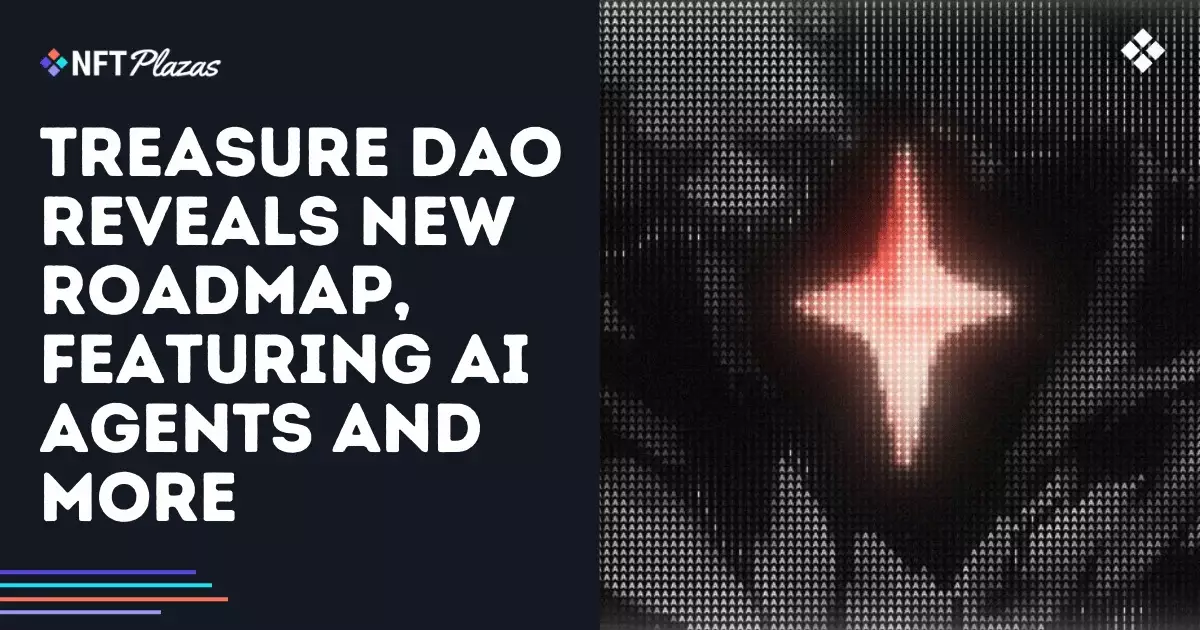The announcement from Treasure, a decentralized gaming network, to pivot its focus towards artificial intelligence marks a pivotal moment in the NFT gaming industry. This is not merely a reaction to market trends but rather a calculated stride into the future of dynamic digital environments. The roadmap release, which includes the introduction of AI agents and an AI marketplace, reflects a comprehensive understanding of the gaming community’s craving for innovation and immersive experiences. It’s an exciting development that could very well redefine the relationship between players and digital worlds.
From Static Assets to Dynamic Experiences
Treasure’s initial foray into the NFT space utilized gamified collections, which, while entertaining, often relied on a static nature that limited user engagement. By incorporating AI, the platform is poised to elevate these static assets into living, breathing components of the gaming ecosystem. The introduction of AI agents capable of operating independently introduces an era where players can interact with native characters that possess memory and decision-making capabilities. This advancement could drastically transition gaming from a passive consumption model to one where players become active co-creators of their experiences in ways previously unimagined.
Empowerment through Decentralization
One of the key aspects of Treasure’s approach lies in its DAO (Decentralized Autonomous Organization) structure. The community is not merely there to engage with the game; they wield power over its direction. The capacity for players to propose and vote on developments ensures a governance model that is inherently democratic. In a landscape often marred by centralized control, this aspect serves as a beacon of empowerment for users who are tired of corporate strategies that disregard their interests. The announcement of the Canopy expansion for Bridgeworld illustrates how player actions will dictate resource distribution, further solidifying user agency within the game environment.
A New Economic Infrastructure
The introduction of the AI agent marketplace is a game-changer for economic dynamics within web3 gaming. It allows for the creation, trading, and upgrading of unique AI characters, which introduces a new layer of depth to the NFT economy. By requiring the native token, $MAGIC, for these transactions, Treasure is not only reinforcing the utility of its cryptocurrency but also establishing an economic ecosystem that incentivizes users to actively engage. This model moves away from speculative asset trading and builds toward a sustainable economy where user creativity and interaction drive value.
The Dawn of Simulated Worlds and Communities
With the launch of Smolworld, promising a Tamagotchi-like experience woven intricately with blockchain capabilities, Treasure is set to create more than just a game; it’s building communities. The AI characters evolving through player interactions hints at a future where these digital entities not only serve as companions but can also drive storyline and gameplay changes. With early demos slated for late 2025, the anticipation already builds—as users yearn for engagement that extends beyond buttons and pixels to forge deeper emotional connections with their virtual counterparts.
Treasure’s new strategic roadmap appears not just innovative but transformative. Given its community-driven governance, immersive AI integration, and a focus on creating lasting experiences, it embodies a forward-thinking approach that could reverberate through the NFT landscape for years to come.

